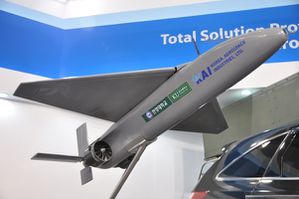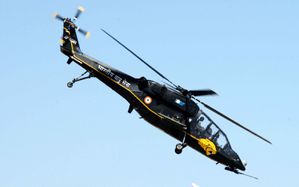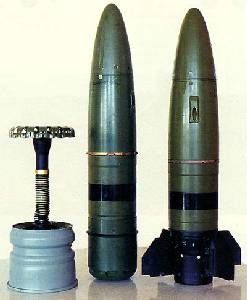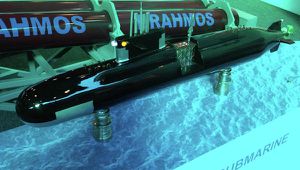Oct 18, 2012 ASDNews Source : Rheinmetall AG
A reliable partner for the Australian Defence Force
Australia is one of the most important powers in the Asia-Pacific region. The Land Warfare Conference (LWC) 2012 offers an impressive overview of the latest developments in wheeled and tracked
vehicles, weapons, ammunition, command and control technology, force protection systems, sensors and much more. Rheinmetall, one of the world’s leading suppliers of defence technology, will be
exhibiting a selection of its product portfolio to Australian and international military delegations and other experts. The Land Warfare Conference takes place from 29 October to 2 November 2012
in Melbourne.
Mobility
Dependable vehicles form the key link in every logistic’s chain. Rheinmetall MAN Military Vehicles’ (RMMV) robust and versatile TG, HX and SX vehicle series have reliably served armies around the
world for many decades. RMMV is proposing its HX series for Australia’s LAND 121 Phase 3B programme, for which RMMV was selected as preferred bidder in December 2011.
All HX vehicles are “military off the shelf” (MOTS) products specially developed for military applications. The HX series ensures extreme mobility and reliability even in the harshest terrain.
RMMV’s HX MOTS vehicle family not only features outstanding mobility, protection and reliability, but also displays maximum modularity and interoperability.
The HX series can be either equipped with a modular armoured cabin (MAC) or a fully integrated armoured cabin to meet the highest STANAG or MIL-STD specifications with regard to ballistic and
mine protection.
At LWC 2012, Rheinmetall MAN Military Vehicles is showcasing an advanced version of the protected HX series for the first time in Australia. The HX 4x4 is equipped with an integrated armoured
cabin as well as the active hard-kill system ADS (Active Defence System). Also on display at the Rheinmetall stand is a version of the HX 8x8 with modular armour, integrated load handling system
(ILHS) and solar shield.
Simulation
With over 2,000 systems in service worldwide, Rheinmetall offers a comprehensive array of live, virtual and constructive simulation products ranging from low-cost computer-based training systems
to highly advanced full-mission simulators for surface combatants, submarines, land and aerial platforms as well as live training for land and air applications. It is a leader in simulation
capabilities for fully networked joint and combined exercises.
Rheinmetall has just expanded its international simulation activities to include Australia. Its Adelaide-based subsidiary, Rheinmetall Simulation Australia, is a sign of the Group’s strong
commitment to consult and support customers in all areas of simulation and training technologies.
The generic “Demonstrator for Gunnery and Combat Simulation” clearly shows Rheinmetall’s expertise in the simulation of tank and infantry fighting vehicles for crew training. The demonstrator
features the Rheinmetall simulation system TacSi as its simulator core and an integrated VBS2 visualisation system. It will be on display at LWC 2012.
Munitions
As a performance-driven global player, Rheinmetall has unique expertise and innovative strength in armour, artillery, air defence, medium calibre, mortar and infantry ammunition and systems. Its
stated aim is to supply the world’s armed forces with customized services and an unparalleled range of products that includes environment-friendly and insensitive ammunition as well as
state-of-the-art effectors. Prominent examples are the Group’s comprehensive portfolio of 40mm x 46 (low velocity/LV and medium velocity/MV) and 40mm x 53 high velocity (HV) ammunition, the new
family of insensitive 60mm mortar bombs, medium-calibre Ahead airburst ammunition, 105mm and 155mm artillery ammunition and propulsion systems and, last but not least, programmable 120mm tank
rounds that are fully compatible with Rheinmetall’s 120mm smoothbore gun, which of course serves as the main armament of the Abrams tank in service with the ADF.
In addition to this, with more than 40 industrial sites, Rheinmetall Defence has extensive experience in plant design, including development, engineering and production – an essential capability
for safeguarding operational excellence in Europe, North America and Africa.
Rheinmetall’s exceptional knowledge and competence in the field of ammunition, its solid track record with various forms of operator models, its successful turn-around of previous
less-than-optimally run ammunition and propellant plants within months of taking operational control, as well as its strong focus on global operations, make the Group an ideal partner for the
Australian Domestic Munitions Manufacturing Arrangements Project (DMMA).
Air defence
Modern air defence systems have to counter traditional threats from above as well as random asymmetric attacks in the form of rocket, artillery and mortar fire (RAM). Rheinmetall Air Defence’s
response to these tactical and technical challenges is the Oerlikon Skyshield MOOTW/C-RAM system. This system is designed to protect military installations and critical civilian infrastructure
from RAM attacks domestically and during expeditionary deployed operations – whether in high-intensity conventional conflicts or during military operations other than war (MOOTW).
The Skyshield MOOTW/C-RAM system is based on Rheinmetall’s Ahead airburst technology. The German Bundeswehr has already procured two Skyshield MOOTW/C-RAM systems, which it refers to as Mantis.
Rheinmetall’s Air Defence team will demonstrate a visual presentation of the Skyshield MOOTW/C-RAM system at the Land Warfare Conference. Fabian Ochsner will also give a lecture about the Swiss
solution of using ground-based air defence systems in MOOTW and other scenarios. Furthermore, Rheinmetall is displaying its Oerlikon Skybat Simulator, a training system for the Skyshield and the
Skyguard air defence systems.
Protection
When it comes to force protection and civil defence, Rheinmetall supplies cutting-edge systems and comprehensive, single-source solutions – whether the aim is preventing optical, optronic or
electronic detection, perfecting individual body armour, developing innovative vehicle systems or even safeguarding large-scale critical infrastructure.
Rheinmetall Chempro und Rheinmetall Verseidag Ballistic Protection Systems are responsible for the Group’s passive protection products. These are made of lightweight, high-performance materials.
They are designed for applications in tactical vehicles, helicopters and ships to protect troops and crewmembers. Inserts for ballistic vests made from these materials are also available.
“Soft-kill” solutions offer excellent active protection for ground vehicles as well as fixed-wing aircraft helicopters and ships. Smoke/obscurant systems like ROSY make vehicles invisible to the
enemy in the event of an ambush. “Hard-kill” systems such as Rheinmetall’s ADS neutralize incoming projectiles before they reach their target, serving as a first line of defence.
Rheinmetall has been one of the most trusted names in the international defence industry for well over a century thanks in part to its unsurpassed ability to integrate new and existing technology
into a highly effective “systems of systems”.
On show at LWC 2012 are ROSY and ADS as well as a protected wheel case.
Network-enabled solutions
A key element for the transformation of armed forces is the networking of existing and new capabilities in joint and combined arms as well as for border security operations – moving away from
platform-oriented approaches to capability and network-enabled solutions. At every echelon, sensors, C2 and support systems are integrated into a network to create an appropriate overall C4ISTAR
architecture.
In Melbourne Rheinmetall Defence Electronics will be showcasing its C4ISTAR system integrator competence, presenting an ultramodern crew compartment.
A fully digital, interoperable, modular platform, this independent land system solution uses open architecture and standard interfaces. It even includes future system characteristics such as
augmented reality. The sensor-to-shooter chain is completely covered, giving the crew a full common operational picture and an unrivalled ability to react faster and with greater precision than
ever before. The system has already been successfully integrated into several vehicles and turrets such as the Rheinmetall Lance turret and the MBT Revolution Upgrade Kit, and is linked to
Rheinmetall Defence Electronics’ state-of-the-art Gladius future soldier system (formerly known as IdZ-ES).
Sensors and fire control technology
High-performance sensors and fire control systems make it possible to quickly detect, identify and discriminate between potential threats, engaging these where necessary. At LWC 2012
Rheinmetall’s Electro-optics business unit is presenting a selection of its diverse array of products in this field.
Visitors can inspect the Group’s tried-and-tested laser pointers, laser target markers and laser light modules, including the Vario Ray (LLM-VR), and the LLM01, which is in service with numerous
armed forces and law enforcement agencies worldwide. The Group’s ZEFF identification friend-foe system, known as the Dismounted Soldier Identification Device/DSID, tops off the division’s product
range on display, together with its Multi-Ray fire control unit.
Together with the Saphir 9.6 aiming device and a fire control unit, the Vingmate aiming and fire control system features a combined tripod and gun cradle. It is thus suitable for various 40mm
automatic grenade launchers such as the MK19 and GMG, but also for heavy .50 cal. machine guns like the BMG, or even 20mm automatic cannon such as the GAM B01. Multi-Ray and Vingmate are both
designed to permit programming of airburst rounds via an infrared laser beam as they leave the barrel.
Rheinmetall: global source for defence technology
Rheinmetall, globally recognized for its core competencies, stands for capacity-oriented innovation. Based in Düsseldorf, Germany, Rheinmetall supplies the world’s armed forces with systems and
equipment developed and designed to ensure successful outcomes in complex modern military operations. Its Combat Systems, Wheeled Vehicles and Electronic Solutions divisions have loyal customers
worldwide.
Rheinmetall also maintains an extensive network of international partnerships serving new markets as well as enabling technology transfer that substantially benefits both the industry and
military of customer nations. This makes Rheinmetall a highly sought-after industrial partner in the quest to supply modern armed forces with advanced capabilities.
The Rheinmetall products on display at LWC 2012 underscore the multifaceted capabilities of one of the world’s leading suppliers of high-quality systems and equipment for armed forces and law
enforcement agencies.































